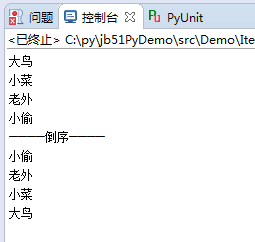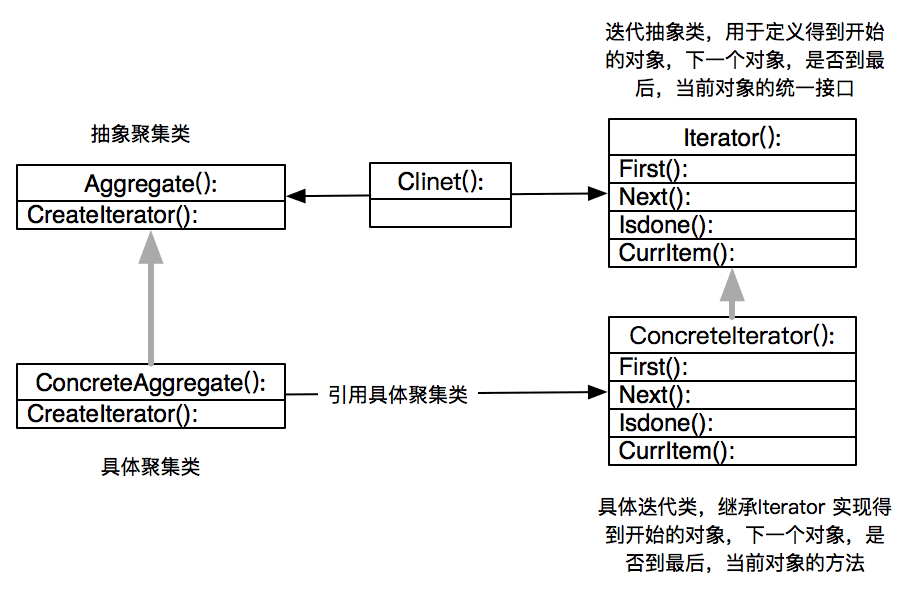本文实例讲述了python设计模式之迭代器模式原理与用法。分享给大家供大家参考,具体如下:
迭代器模式(iterator pattern):提供方法顺序访问一个聚合对象中各元素,而又不暴露该对象的内部表示.
下面是一个迭代器模式的demo:
|
1
2
3
4
5
6
7
8
9
10
11
12
13
14
15
16
17
18
19
20
21
22
23
24
25
26
27
28
29
30
31
32
33
34
35
36
37
38
39
40
41
42
43
44
45
46
47
48
49
50
51
52
53
54
55
56
57
58
59
60
61
62
63
64
65
66
67
68
69
70
71
72
73
74
75
76
|
#!/usr/bin/env python# -*- coding:utf-8 -*-__author__ = 'andy'"""大话设计模式设计模式——迭代器模式迭代器模式(iterator pattern):提供方法顺序访问一个聚合对象中各元素,而又不暴露该对象的内部表示."""#迭代器抽象类class iterator(object): def first(self): pass def next(self): pass def isdone(self): pass def curritem(self): pass#聚集抽象类class aggregate(object): def createiterator(self): pass#具体迭代器类class concreteiterator(iterator): def __init__(self, aggregate): self.aggregate = aggregate self.curr = 0 def first(self): return self.aggregate[0] def next(self): ret = none self.curr += 1 if self.curr < len(self.aggregate): ret = self.aggregate[self.curr] return ret def isdone(self): return true if self.curr+1 >= len(self.aggregate) else false def curritem(self): return self.aggregate[self.curr]#具体聚集类class concreteaggregate(aggregate): def __init__(self): self.ilist = [] def createiterator(self): return concreteiterator(self)class concreteiteratordesc(iterator): def __init__(self, aggregate): self.aggregate = aggregate self.curr = len(aggregate)-1 def first(self): return self.aggregate[-1] def next(self): ret = none self.curr -= 1 if self.curr >= 0: ret = self.aggregate[self.curr] return ret def isdone(self): return true if self.curr-1<0 else false def curritem(self): return self.aggregate[self.curr]if __name__=="__main__": ca = concreteaggregate() ca.ilist.append("大鸟") ca.ilist.append("小菜") ca.ilist.append("老外") ca.ilist.append("小偷") itor = concreteiterator(ca.ilist) print itor.first() while not itor.isdone(): print itor.next() print "————倒序————" itordesc = concreteiteratordesc(ca.ilist) print itordesc.first() while not itordesc.isdone(): print itordesc.next() |
运行结果:

上面类的设计如下图:

当需要对聚集有多种方式遍历时,可以考虑使用迭代器模式
迭代器模式分离了集合的遍历行为,抽象出一个迭代器类来负责,这样既可以做到不暴露集合内部结构,又可以让外部代码透明的访问集合内部的数据
希望本文所述对大家python程序设计有所帮助。
原文链接:https://www.cnblogs.com/onepiece-andy/p/python-iterator-pattern.html










